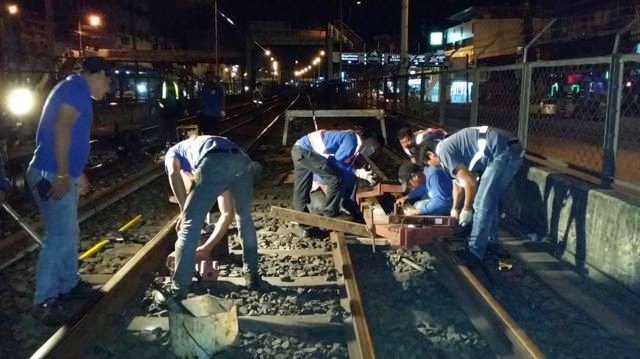SUMMARY
This is AI generated summarization, which may have errors. For context, always refer to the full article.

MANILA, Philippines – Busan Universal Rail Incorporated, the maintenance provider of the Metro Rail Transit Line 3 (MRT3), dismissed allegations that the railway system encountered more glitches under its watch.
Busan lawyer and spokesperson Charles Mercado said the latest Commission on Audit (COA) report on MRT3 operations included glitches from January 2014 to December 2016.
“Busan only took over the maintenance operations of MRT3 last January 2016. This is such a short time to show any improvements,” Mercado said during a briefing in Makati City on Tuesday, July 11.
As of June 30, Mercado said Busan has recorded a comparative decrease of about 17% in train stoppages compared to 2016, and about 20% from the 2015 level. (READ: DOTr eyes MRT3 buyout under Duterte admin)
“There are some discrepancies in the way the latest COA finding on our performance was reported in the media,” Mercado said, asserting Busan has delivered its contractual obligations and even outperformed some requirements.
Mercado said that when Busan assumed maintenance operations in January 2016, only 40 of the 72 MRT3 cars were operational. “The 40 cars at that time added to only 13 usable 3-car trains, with one extra car.”
“However, from January 2016 when Busan started work on its contract with the government, it progressively restored 26 of the non-operational cars to make available up to 22 3-car trains by end of the year,” Mercado said.
In 2015 under SBI-CB&T, the service provider before Busan, Mercado said there were a total of 2,776 system glitches and an average of only 61.44% operational cars.
In contrast, during the first year of work, Busan claimed it was able to reduce the number of system glitches to 2,701, even as it increased the average number of operational cars to 71.69% of the total fleet.
“It is unfair to continuously put the blame on us for every incidence of train stoppage that is generally and more often caused by the system’s rail condition and increasingly evident design flaws,” Mercado said.
Largely unpaid
Mercado also disclosed during the press briefing that the government has only partially paid Busan for its September 2016 to December 2016 work and largely unpaid Busan for its rendered service since then.
“This is for pending billing of more than P200 million,” the contractor’s legal counsel said.
But despite the underpayment, Mercado said Busan is moving forward to meet its commitment of train reliability, as well as safety and comfort for ridership.
He said Busan has employed 500 dedicated personnel, of which some 40 are in the front office and about 450 assigned day-in and day-out at the MRT depot.
“These locals work hand in hand with the South Korean engineers from Busan Transport Corporation to directly perform duties that ensure train availability and safety of passengers,” Mercado said.
As of July 10, the operational fleet availability of the MRT3 is at 91.67% or 66 out of 72 cars.
Busan is a joint venture of South Korea’s Busan Transport Corporation, Tramat Mercantile Incorporated, TMI Corporation, Castan Construction Corporation, and Edison Development & Construction. – Rappler.com
Add a comment
How does this make you feel?
There are no comments yet. Add your comment to start the conversation.